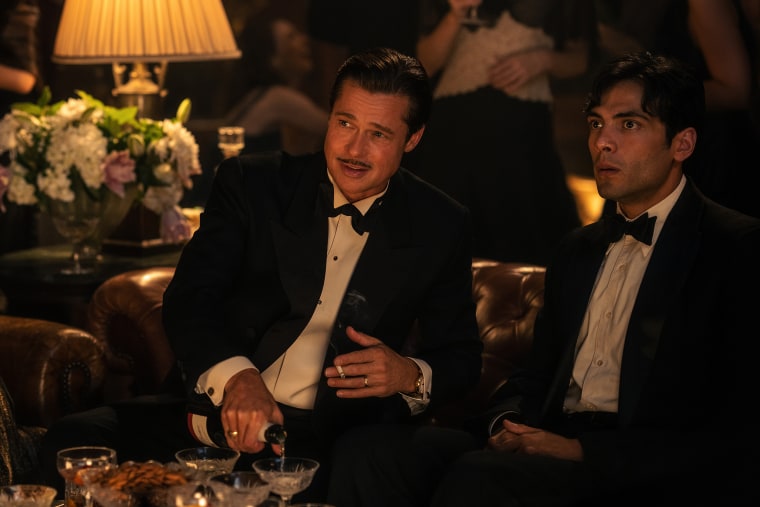[ad_1]
“Babylon,” which opens nationwide Friday, tells an epic story about ordinary people who became Hollywood legends during the golden age of silent films in the 1920s.
Viewers will see these characters indulge in the excesses of their movie fame before fading from the spotlight — sometimes tragically and brutally — as talking movies make them feel invisible.
Mexican actor Diego Calva, 30, who shares the big screen in “Babylon” with Brad Pitt and Margot Robbie, wants viewers to remember those early movie pioneers, some of whom were Latino, who helped make Hollywood but have been largely forgotten by history.


“It was pretty cool to put a face to a successful Mexican in that time,” Calva told NBC News, referring to his fictional character Manny Torres, who ultimately works his way up from being an assistant to a silent movie producer. “Latinos, we were always here, you know, working on this.”
His role has garnered him a 2023 Golden Globe nomination for best actor in a comedy or musical, which could make his jump from television to film more permanent. Outside of “Babylon,” fans will recognize him from Netflix’s “Narcos: Mexico,” in which he played the drug trafficker Arturo Beltrán Leyva.
Calva said much of his success as an actor is driven by the same type of movie passion that lifted his character in “Babylon” to a more prominent role in Hollywood.

“For Manny, movies are like the door for a bigger universe, for a bigger opportunity,” he said. “I think I share the same situation. This is my first time in Miami and I’m only here because I’m making movies,” he said in a video interview.
Whereas some viewers might see movies as an escape, Calva said, he sees film as “a way to actually get more immersed into reality.”
Early Latino actors were featured in stereotypical characters as bandits, cantina girls and lovers. But some became legends in the 1920s, including the Mexican-born actor Ramón Novarro, who starred in the 1925 silent film hit “Ben-Hur: A Tale of the Christ.”
Novarro’s cousin, Dolores Del Río, also had crossover success between Mexico and Hollywood, and even starred in talking movies after becoming a silent film star. Her 1943 romance “María Candelaria,” was the first Mexican movie to be screened at the Cannes International Film Festival.
Movies then and now, Calva said, have the power to appeal to viewers with different backgrounds, with “Babylon” as an example of people teaming up to tell stories of diverse characters on the big screen.

“I think it’s beautiful what is going on right now, because we are finally mixing all stories to create something that belongs to everyone. And that’s important,” he said.
Looking back at the history of silent film, Calva pointed out the contradiction of how talking movies also silenced the voices of people in the industry.
“Movie sets during the silent period were like noisy. Two movies were shooting at the same time,” he said referring to a “Babylon” scene.
“But then when the sound came,” Calva said, “the set became silent.”
[ad_2]
Source link
